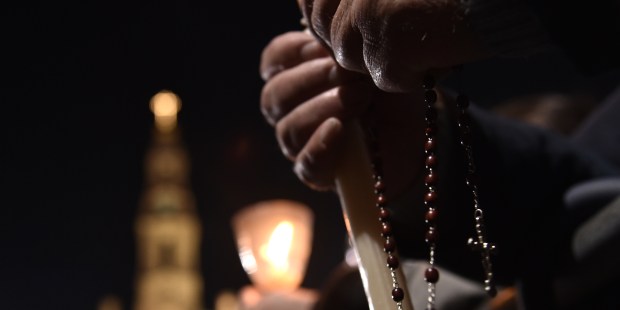- Feb 5, 2002
- 182,089
- 65,884
- Country
- United States
- Gender
- Female
- Faith
- Catholic
- Marital Status
- Married
- Politics
- US-Others
The distinctions between dulia, hyperdulia, proskynesis, and latria are crucial for a proper understanding of the many subtle yet decisive differences at play in Catholic theology and practice.
Within Christianity, and particularly in the Catholic and Orthodox traditions, distinct forms of veneration or reverence can be found, each one of them carrying specific connotations and finding different devotional expressions. These expressions (more like “levels of veneration”) are traditionally known (in the original Greek) as dulia, proskynesis, hyperdulia, and latria.
It should be noted that Christian theologians have long reserved the last term, latria, for the type of worship due to God alone. These other three types of veneration (dulia, proskynesis, and hyperdulia) are used to refer to the veneration given to angels, saints, relics, icons, and the Virgin Mary. Indeed, veneration is a type of honor distinct from the true worship (that is, adoration), which is due to God alone.
Continued below.

 aleteia.org
aleteia.org
Within Christianity, and particularly in the Catholic and Orthodox traditions, distinct forms of veneration or reverence can be found, each one of them carrying specific connotations and finding different devotional expressions. These expressions (more like “levels of veneration”) are traditionally known (in the original Greek) as dulia, proskynesis, hyperdulia, and latria.
It should be noted that Christian theologians have long reserved the last term, latria, for the type of worship due to God alone. These other three types of veneration (dulia, proskynesis, and hyperdulia) are used to refer to the veneration given to angels, saints, relics, icons, and the Virgin Mary. Indeed, veneration is a type of honor distinct from the true worship (that is, adoration), which is due to God alone.
Dulia
Continued below.

Dulia, latria, hyperdulia: Understanding Catholic practices
Distinguishing between different levels of veneration is crucial for a proper understanding of the many differences at play in Catholic theology and practice.
